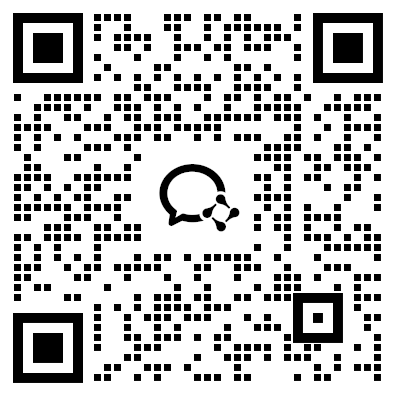选课中心
7099人选课
GMAT公开讲座
0元
GRE公开讲座
0元
一对一体验课
99元
GMAT模考网站
10000人
GRE模考网站
GMAT课程
GRE课程
托福辅导课程
【定制】1v1
私人订制
资料下载
考前冲刺

扫码添加助教
免费领取
备考资料大礼包

扫码关注公众号
新东方在线GMAT频道为大家带来GMAT阅读新题:Passage 10练习题一文,希望对大家GMAT备考有所帮助。更多精彩尽请关注新东方在线GMAT频道!>>点击查看更多GMAT阅读
Passage 10 (10/63)
Caffeine, the stimulant in coffee, has been called “the most widely used psychoactive substance on Earth.” Snyder, Daly and Bruns have recently proposed that caffeine affect behavior by countering the activity in the human brain of a naturally occurring chemical called adenosine. Adenosine normally depresses neuron firing in many areas of the brain. It apparently does this by inhibiting the release of neurotransmitters, chemicals that carry nerve impulses from one neuron to the next. Like many other agents that affect neuron firing, adenosine must first bind to specific receptors on neuronal membranes. There are at least two classes of these receptors, which have been designated A1 and A2. Snyder et al (et al: abbr. (Lat) 以及其他人,等人) propose that caffeine, which is structurally similar to adenosine, is able to bind to both types of receptors, which prevents adenosine from attaching there and allows the neurons to fire more readily than they otherwise would.
For many years, caffeine’s effects have been attributed to its inhibition of the production of phosphodiesterase, an enzyme that breaks down the chemical called cyclic AMP. A number of neurotransmitters exert their effects by first increasing cyclic AMP concentrations in target neurons. Therefore, prolonged periods at the elevated concentrations, as might be brought about by a phosphodiesterase inhibitor, could lead to a greater amount of neuron firing and, consequently, to behavioral stimulation. But Snyder et al point out that the caffeine concentrations needed to inhibit the production of phosphodiesterase in the brain are much higher than those that produce stimulation. Moreover, other compounds that block phosphodiesterase’s activity are not stimulants.
To buttress their case that caffeine acts instead by preventing adenosine binding, Snyder et al compared the stimulatory effects of a series of caffeine derivatives with their ability to dislodge adenosine from its receptors in the brains of mice. “In general,” they reported, “the ability of the compounds to compete at the receptors correlates with their ability to stimulate locomotion in the mouse; i.e., the higher their capacity to bind at the receptors, the higher their ability to stimulate locomotion.” Theophylline, a close structural relative of caffeine and the major stimulant in tea, was one of the most effective compounds in both regards.
There were some apparent exceptions to the general correlation observed between adenosine-receptor binding and stimulation. One of these was a compound called 3-isobutyl-1-methylxanthine (IBMX), which bound very well but actually depressed mouse locomotion. Snyder et al suggests that this is not a major stumbling block (stumbling block: n.障碍物, 绊脚石) to their hypothesis. The problem is that the compound has mixed effects in the brain, a not unusual occurrence with psychoactive drugs. Even caffeine, which is generally known only for its stimulatory effects, displays this property, depressing mouse locomotion at very low concentrations and stimulating it at higher ones.
1. The primary purpose of the passage is to
(A) discuss a plan for investigation of a phenomenon that is not yet fully understood
(B) present two explanations of a phenomenon and reconcile the differences between them
(C) summarize two theories and suggest a third theory that overcomes the problems encountered in the first two
(D) describe an alternative hypothesis and provide evidence and arguments that support it(D)
(E) challenge the validity of a theory by exposing the inconsistencies and contradictions in it
2. Which of the following, if true, would most weaken the theory proposed by Snyder et al?
(A) At very low concentrations in the human brain, both caffeine and theophylline tend to have depressive rather than stimulatory effects on human behavior.
(B) The ability of caffeine derivatives at very low concentrations to dislodge adenosine from its receptors in mouse brains correlates well with their ability to stimulate mouse locomotion at these low concentrations.
(C) The concentration of cyclic AMP in target neurons in the human brain that leads to increased neuron firing can be produced by several different phosphodiesterase inhibitors in addition to caffeine.
(D) The concentration of caffeine required to dislodge adenosine from its receptors in the human brain is much greater than the concentration that produces behavioral stimulation in humans.(D)
(E) The concentration of IBMX required to dislodge adenosine from its receptors in mouse brains is much smaller than the concentration that stimulates locomotion in the mouse.
3. According so Snyder et al, caffeine differs from adenosine in that caffeine
(A) stimulates behavior in the mouse and in humans, whereas adenosine stimulates behavior in humans only
(B) has mixed effects in the brain, whereas adenosine has only a stimulatory effect
(C) increases cyclic AMP concentrations in target neurons, whereas adenosine decreases such concentrations
(D) permits release of neurotransmitters when it is bound to adenosine receptors, whereas adenosine inhibits such release(D)
(E) inhibits both neuron firing and the production of phosphodiesterase when there is a sufficient concentration in the brain, whereas adenosine inhibits only neuron firing
4. In response to experimental results concerning IBMX, Snyder et al contended that it is not uncommon for psychoactive drugs to have
(A) mixed effects in the brain
(B) inhibitory effects on enzymes in the brain
(C) close structural relationships with caffeine
(D) depressive effects on mouse locomotion(A)
(E) the ability to dislodge caffeine from receptors in the brain
5. The passage suggests that Snyder et al believe that if the older theory concerning caffeine’s effects were correct, which of the following would have to be the case?
I. All neurotransmitters would increase the short-term concentration of cyclic AMP in target neurons.
II. Substances other than caffeine that inhibit the production of phosphodiesterase would be stimulants.
III. All concentration levels of caffeine that are high enough to produce stimulation would also inhibit the production of phosphodiesterase.
(A) I only
(B) I and II only
(C) I and III only
(D) II and III only(D)
(E) I, II, and III
6. According to Snyder et al, all of the following compounds can bind to specific receptors in the brain EXCEPT
(A) IBMX
(B) caffeine
(C) adenosine
(D) theophylline(E)
(E) phosphodiesterase
7. Snyder et al suggest that caffeine’s ability to bind to A1 and A2 receptors can be at least partially attributed to which of the following?
(A) The chemical relationship between caffeine and phosphodiesterase
(B) The structural relationship between caffeine and adenosine
(C) The structural similarity between caffeine and neurotransmitters
(D) The ability of caffeine to stimulate behavior(B)
(E) The natural occurrence of caffeine and adenosine in the brain
8. The author quotes Snyder et al in lines 38-43 most probably in order to
(A) reveal some of the assumptions underlying their theory
(B) summarize a major finding of their experiments
(C) point out that their experiments were limited to the mouse
(D) indicate that their experiments resulted only in general correlations(B)
(E) refute the objections made by supporters of the older theory
9. The last paragraph of the passage performs which of the following functions?
(A) Describes a disconfirming experimental result and reports the explanation given by Snyder et al in an attempt to reconcile this result with their theory.
(B) Specifies the basis for the correlation observed by Snyder et al and presents an explanation in an attempt to make the correlation consistent with the operation of psychoactive drugs other than caffeine.
(C) Elaborates the description of the correlation observed by Snyder et al and suggests an additional explanation in an attempt to make the correlation consistent with the older theory.
(D) Reports inconsistent experimental data and describes the method Snyder et al will use to reanalyze this data.(A)
(E) Provides an example of the hypothesis proposed by Snyder et al and relates this example to caffeine’s properties.
以上就是新东方在线GMAT频道为你带来的GMAT阅读新题练习题,更多精彩敬请关注新东方在线GMAT频道。
| GMAT直播VIP小班 | GMAT直播精讲班 | GMAT录播课 |
| (VIP小班/全科班+1对1) | (全科精讲/单项备考) | (全科班/单项班) |
| 72.5课时 ¥18800 | 61课时 ¥7796 | 134课时 ¥14680 |

 资料下载
资料下载
新东方GMAT佛脚词汇1.0版本
发布时间:2023-06-30添加新东方美研助教号
回复【资料】获取
新东方GMAT数学500题资料下载
发布时间:2023-05-26添加新东方美研助教号
回复【资料】获取
新东方GMAT800题资料下载
发布时间:2022-05-21添加新东方美研助教号
回复【资料】获取
1000句GMAT真实句子改错问题
发布时间:2022-04-17添加新东方美研助教号
回复【资料】获取
2024杨鹏阅读难句(GMAT+GRE)教程
发布时间:2022-04-17添加新东方美研助教号
回复【资料】获取
新东方GMAT数学500题(解析及答案)
发布时间:2019-11-27添加新东方美研助教号
回复【资料】获取
新东方GMAT800题(逻辑+语法+阅读)
发布时间:2019-11-27添加新东方美研助教号
回复【资料】获取
新东方GMAT佛脚词汇1.0版本
发布时间:2019-11-27添加新东方美研助教号
回复【资料】获取
GMAT词汇/长难句/语法资料大全
发布时间:2019-11-27添加新东方美研助教号
回复【资料】获取
GMAT语文考试圣经(Bible)电子版
发布时间:2019-11-27关注新东方在线美研订阅号
回复【GMAT】获取
GMAT推理圣经PDF电子版
发布时间:2019-11-27添加新东方美研助教号
回复【资料】获取
GMAT考试OG五个版本题号对照表
发布时间:2019-11-27添加新东方美研助教号
回复【资料】获取
GMAT Ultimate Grammar电子书籍PDF
发布时间:2019-11-27添加新东方美研助教号
回复【资料】获取

添加美研助教号,
回复【GMAT】获取备考必看资料包

 推荐阅读
推荐阅读
新东方在线GMAT频道为大家带来GMAT阅读复习的五大步骤,希望对大家GMAT备考有所帮助。更多精彩尽请关注新东方在线GMAT频道! 1:原来
新东方在线GMAT频道为大家带来GMAT阅读背景的培养,希望对大家GMAT备考有所帮助。更多精彩尽请关注新东方在线GMAT频道! 一、经济学
新东方在线GMAT频道为大家带来GMAT阅读复习效率不高怎么办,希望对大家GMAT备考有所帮助。更多精彩尽请关注新东方在线GMAT频道! 建
新东方在线GMAT频道为大家带来GMAT阅读提高速度的根本方法,希望对大家GMAT备考有所帮助。更多精彩尽请关注新东方在线GMAT频道! 1
新东方在线GMAT频道为大家带来GMAT阅读如何避免错误,希望对大家GMAT备考有所帮助。更多精彩尽请关注新东方在线GMAT频道! 要避免GMA
新东方在线GMAT频道为大家带来GMAT阅读技巧的提升,希望对大家GMAT备考有所帮助。更多精彩尽请关注新东方在线GMAT频道! GMAT阅读推
新东方在线GMAT频道为大家带来GMAT阅读备考的注意事项,希望对大家GMAT备考有所帮助。更多精彩尽请关注新东方在线GMAT频道! GMAT阅
新东方在线GMAT频道为大家带来GMAT阅读怎么提高自己的能力,希望对大家GMAT备考有所帮助。更多精彩尽请关注新东方在线GMAT频道! 建
新东方在线GMAT频道为大家带来GMAT阅读长句子的备考,希望对大家GMAT备考有所帮助。更多精彩尽请关注新东方在线GMAT频道! 1 首先
新东方在线GMAT频道为大家带来GMAT阅读水平怎么提高,希望对大家GMAT备考有所帮助。更多精彩尽请关注新东方在线GMAT频道! 下面就来


 GRE录播课(全科班/单项班)
GRE录播课(全科班/单项班)
 GMAT6-8人直播VIP小班
GMAT6-8人直播VIP小班
 托福直播精讲班(30天/60天)
托福直播精讲班(30天/60天)
 资料下载
资料下载
添加新东方美研助教号
回复【资料】获取
添加新东方美研助教号
回复【资料】获取
添加新东方美研助教号
回复【资料】获取
添加新东方美研助教号
回复【资料】获取
添加新东方美研助教号
回复【资料】获取
添加新东方美研助教号
回复【资料】获取
添加新东方美研助教号
回复【资料】获取
添加新东方美研助教号
回复【资料】获取
添加新东方美研助教号
回复【资料】获取
关注新东方在线美研订阅号
回复【GMAT】获取
添加新东方美研助教号
回复【资料】获取
添加新东方美研助教号
回复【资料】获取
添加新东方美研助教号
回复【资料】获取

 阅读排行榜
阅读排行榜
 相关内容
相关内容